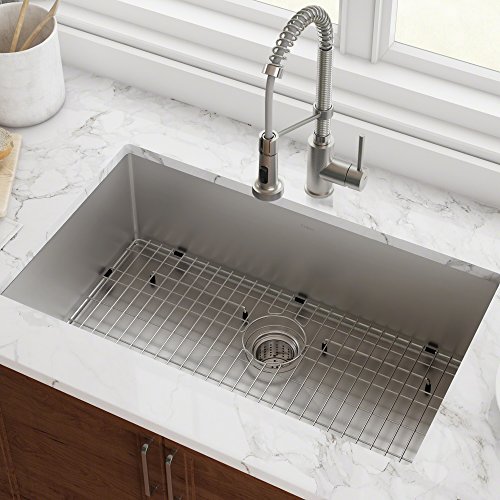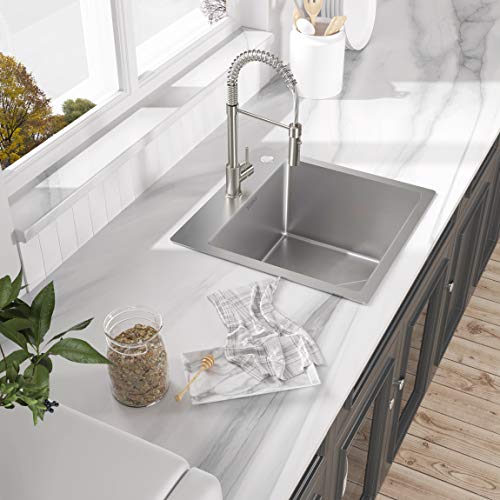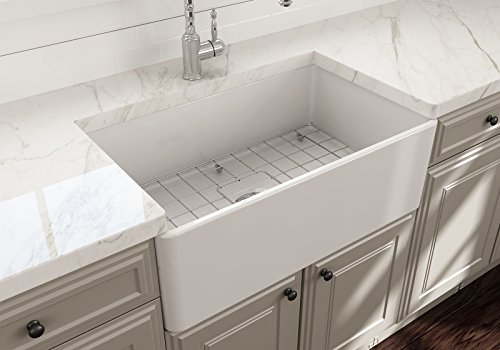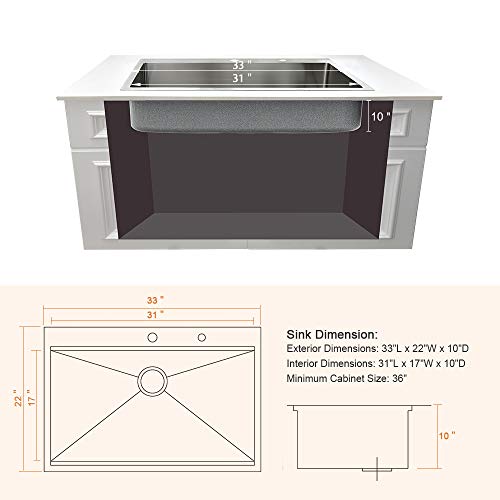If you think about buying kitchen appliances, you might get carried away either by their quality or by their element, for example-kitchen sinks. Before purchasing a sink, you must ensure that the sink won’t flood your kitchen or fall on your cabinet. In that case, the weight of the sink becomes a priority while installing the sink.
How much weight can the kitchen sink hold?
The amount of weight a kitchen sink can carry is primarily dependent on the weight of the sink’s material. Moreover, the size and shape of the sink play a significant role in determining the weight. A kitchen sink is generally sealed with Silicone caulk to hold the weight of a full set of dishes.
Table of Contents
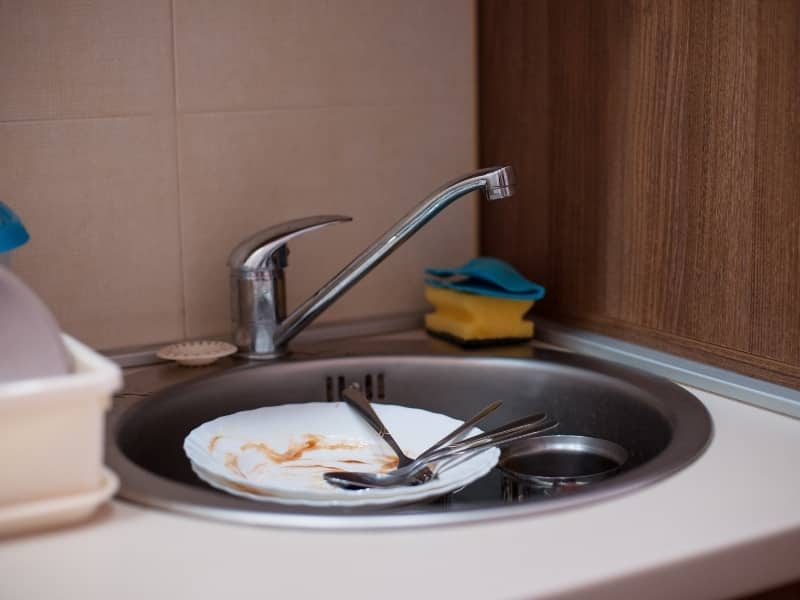
While determining how much weight your kitchen sink might hold, you should also pay attention to its installation process. Proper installation is required to avoid leakage or flooding your kitchen. Moreover, a full sink of dishes gets very heavy and may drop into the floor without having strong frame support.
The most popular sinks weigh a maximum of 55 lbs, which are made of stainless steel. The minimum weight is around 25lbs. However, the weight also depends on the number of chambers and designs of the cabinets.
What is the capacity of a kitchen sink?
Various types of kitchen sinks are now available in the market. The volume of most kitchen sinks is a minimum of 20 milliliters and a maximum of 20 liters. The sink’s capacity highly depends on the material of the sink and is obtained from the volume measurement of the sink.
Three main types of sinks and their capacity you must know before installing-
Type 1: Stainless undermount sink
An under-mount sink is the most popular kitchen sink used in most places, starting from hotel kitchens to dormitory kitchens. Its hard metallic surface makes it resistant to bacterial infection.
The median under-mount kitchen sink measures 25-1/4 to 26 inches wide and 36 to 42 inches high. An under-mount sink generally measures 24 inches in depth. The standard 22 inches in length and 33 inches in width are kept in mind while installing kitchen sinks with these dimensions.
Undermount Stainless steel remains a popular choice among homeowners because of its durability. Moreover, under-mount stainless steel sinks offer many advantages, including resistance to chipping, cracking, or peeling.
Visit here to see this on Amazon
Type 2: Drop-in sinks
Drop-in sinks are another popular sink dominating the markets. Another name of Drop-in sinks is self-rimming or top-mount. Double-bowl units are generally 48 inches wide. On the other hand, single bowl drop-in sinks measure 33 inches wide. There are also triple bowl units that might measure a total of 60 inches in width. The depth is around 8-14 inches.
If you like to keep your kitchen separated from your dirty utensils, then a double or triple bowl sink is what you need.
Visit here to see this on Amazon
Type 3: Farmhouse sink
Farmhouse sinks are also known as apron sinks due to their functionality and the long-lasting charm they have provided. Apron front sinks cover the other three sides allowing for a moveable installation, while farmhouse sinks could be installed covering all the four sides.
A farmhouse sink’s standard size measures 7 to 10 inches deep; The measurement covers 20 to 42 inches in side by side measurement. In case of capacity, they can easily carry weight measuring from 100 to 200 pounds.This sink style can be found in different materials, sizes, colors, and designs to place into any modern or traditional kitchen.
Visit here to see this on Amazon
However, the capacity of each type of kitchen sink might vary from one sink to another. The brackets, countertop, and support frame also adds to while weighing the capacity of each sink.
What is the most reasonable unit to measure the capacity of a kitchen sink?
The most reasonable unit to measure the capacity of a kitchen sinks is gallons. You should consider the three variables while measuring the capacity of the sink. They are length, breadth, and sink depth. However, it would be best to consider subtracting a couple of inches from the sink depth while calculating the final measurement. Later divide the total product by 231. You will have this volume into gallons and get a better idea of how much liquid the sink can carry.
An example might be significant to explain the calculation in detail. Suppose a sink is 25 by 30 inches. The depth is a total of 10 inches. Subtract two inches from the sink depth and determine the volume. Finally, divide the product by 231, and you will obtain the volume in gallons.
Visit here to see this on Amazon
How do you support a sink?
Before installing a kitchen sink, you must check with your countertop supplier to see if anchors, epoxy, or a support frame is needed. Here’s an easy solution to support your sink.
Step 1: Using screws to attach the sink to the countertop
If you have an under-mount sink, then the sink can’t be directly attached to the countertop. It, unfortunately, doesn’t have that much strength to hold a sink. You can use screws to attach the sink to the countertop’s bottom part.
Step 2: An independent frame is a must
An independent frame is required to support the sink’s weight. The frame can be made of oak a ¾ inches thick as the oak offers more flexibility and strength. There is a free space between the frame and sink, allowing adjusting if needed for the countertop hole. Make sure the frame fits the sink well.
Step 3: Adjusting the rails
The rails screwed below the frame will support the structure and allow height adjustments. Ease the edges to make sure the sink doesn’t scrub against the surfaces. Once you place the sink over the frame, your job is done.
Visit here to see this on Amazon
How do you fix a sagging sink?
Fixing a sagging sink might be a tough job if you don’t have prior knowledge about its repairing process. We will walk you down through a simple process that would make your lives 10x times better while fixing a sagging sink.
Step 1: Removing everything surrounding the sink
Take your time and remove everything surrounding the sink, starting from the faucet, soap dispenser to the brain parts that connect directly to the sink.
Step 2: Removing the silicone and glue off the granite
While removing the sagging sink, make sure not to crack the granite countertop. Consider removing the Silicone and glue off the granite’s underside and of the sink to get a clean surface to which you can reattach later.
Step 3: Reinstalling the sink
As soon as the sagging sink has been removed and the surfaces have been cleared, start reinstalling a new sink.
Step 4: Using brackets to hold the sink
Use a series of brackets right around the sink to make sure the brackets hold the sink in place. Instead of the Silicone carrying the sagging sink for months before it fell, the brackets screwed onto the vertical panels will push the sink up, and the weight would be transferred to the cabinet wall.
Visit here to see this on Amazon
Use a bit of Silicone to prevent moisture from going through and giving a proper seal. However, the brackets would be enough to hold the sink into its original place. If you have already reinstalled the sink into its position following the above instructions, CONGRATULATIONS! Your problem has been solved.
Is silicone enough to hold an under-mount sink?
No, Silicone mightn’t be enough to hold an under-mount sink. Silicone caulk is only used to provide waterproof support between the sink and the counterpart. It doesn’t guarantee whether it would hold the weight of the sink for years. Undermount sinks are typically sealed with silicone caulking with the help of a two-part epoxy adhesive.
Most undermount sinks are written with very clear written installation information and instructions. Every set of instructions includes placing silicone caulk around the flat surface of the undermount sink.
How to repair an undermount sink that has fallen?
When your sink detaches itself from the countertop or either falls, it might create a severe problem for your daily chores. No worries. There’s always a solution to every situation, and we will guide you to repair your fallen sink without the need to remove your sink completely.
Step 1: Attaching the back of the bracket to the cabinet
First, Consider turning the turnbuckle’s shaft, and your sink will be moved back from its original position. Then take a tape and stick it from the bracket’s back to attach it to the cabinet wall.
Step 2: Installing the fastening screws
You should make sure that the double-headed bracket engages with the sink’s outer rim at the top. The temporary adhesive used to attach the cabinet bracket will allow for hands-free operation to install the full fastening screws.
Step 3: Sealing the joint between sink and countertop
Now seal the opening between the sink rim and countertop where the failure occurred.
Visit here to see this on Amazon
Then again, consider turning the shaft, and your sink will be put back into its place, and simply your work without a hassle.
From buying a kitchen sink to fixing a sagging sink can be troublesome most of the time. In addition to installing or repairing a kitchen sink, it’s more important to understand a kitchen sink’s weight capacity as the durability of the sink depends on it. It’s never too late to ask questions. Whenever in doubt, remember we’re always a knock away from you!

